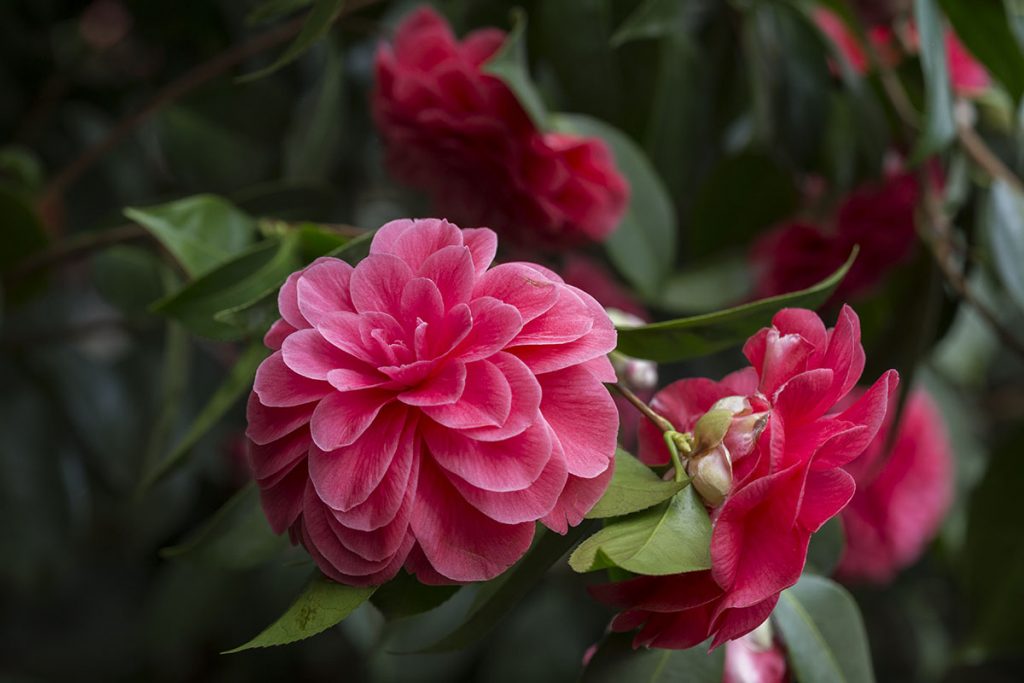To our loyal customers and friends, please accept our sincere appreciation for your votes in this year’s “BEST OF THE WOODLANDS” selections. Being named “BEST OF THE WOODLANDS” is OUR assurance we are doing the job we set out to do, and YOUR assurance you won’t get a better service elsewhere. Thank you for your business; thank you for your votes of support.
March is a transitional month. While a late winter freeze is possible in our area (zone 8), from a historical perspective frosts become less likely after the end of February. All of us are now thinking SPRING TIME. And in most cases, so are the trees, shrubs, and flowering plants.
Now is a good time to trim back those plants that suffered frost bite this winter. You might have some tropical that were damaged, but don’t yank them out just yet. Give them some time; they MIGHT come back in another month or so. If, after a month, you see no new growth, you should probably replace them.
LAWNS: Regular, weekly mowing is just around the corner. Get those mowers tuned up, blades sharpened, and everything in good repair for the upcoming summer. Watch the lawn, and if sufficient growth occurs this month, you should mow. It is unhealthy to the grass if it gets too tall before mowing.
It is OK to fertilize with a professional product that is designed for our Southern lawns.
Cool weather weeds are probably growing in the lawn now. You are advised to use broad-leaf weed-killing herbicides with caution at this time. However, warm-season weeds have not yet become apparent. It isn’t too late to apply a pre-emergent weed treatment before weeds become a problem. Pre-emergent can prevent the seeds from germinating.
TREES: It is getting near the end of the tree and shrub-planting window. The chance of survival is rather low on bare-root trees and shrubs this late in the season. (Beware of “close-out” sales on these.) It is better to purchase container-grown or “ball and burlap” plants at this time of year.
FLOWERING SHRUBS: As azalea and camellia plants finish blooming, fertilize them with 3 lbs. of azalea-camellia fertilizer per 100 sq. ft. of bed area. Mulch them well and water as needed.
Azaleas should be shaped and trimmed immediately post-bloom. That is because next year’s blooms will come from “old wood”. By waiting until later in the year to trim, you might be compromising next year’s blooms.
TRIMMING AND CUTTING BACK: If you haven’t trimmed or pruned your roses, do so now. Fertilize every 4 to 6 weeks from now through summer. Regular spraying for blackspot should begin as soon as new leaves begin to open. Regular spraying should continue through the growing season.
Verbena can be cut back now, along with Lariope, Louisiana Iris, and Agapanthas. It will be necessary to cut back Philodendron and Ginger if yours suffered freeze damage, as did mine.
If plants are getting too tall for their environment, cut the longest stems off.
Note: Live Oak trees tend to drop their leaves in March. Leaves left on the turf now can cause problems. Rake them for the compost pile or mulch them up so they don’t hinder the new growth of the turf.
SEND US YOUR QUESTIONS AND COMMENTS
Thank you for your questions and comments. We can be contacted at our offices at 281-681-1025, or through our web site: www.LawnRangerCompany.com.
“Like” us on Facebook at www.facebook.com/lawnrangercompany
Follow us on Twitter: @lawnranger_walt
Check out a few videos at www.youtube.com/lawnrangercompany
Voted BEST OF THE WOODLANDS 2010,’11,’12,’13,’14,’15,’16,’17,’18,’19
